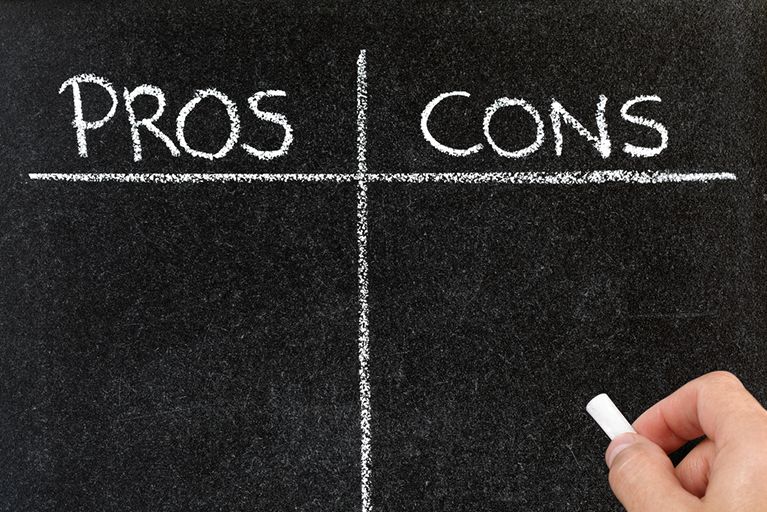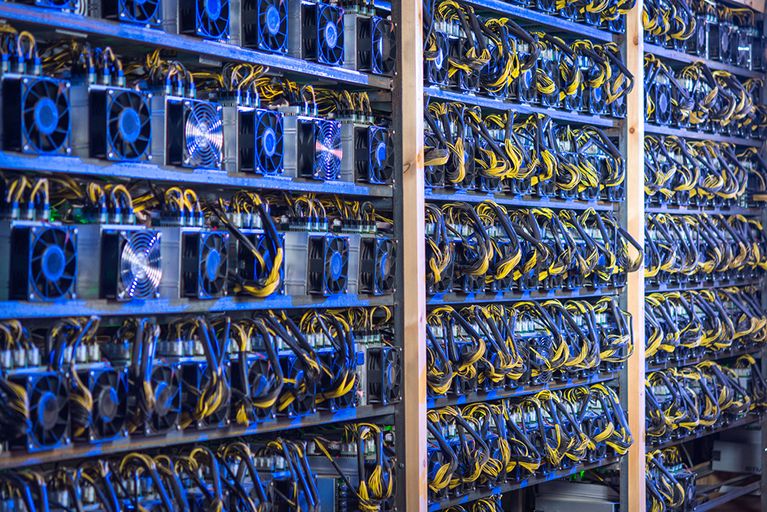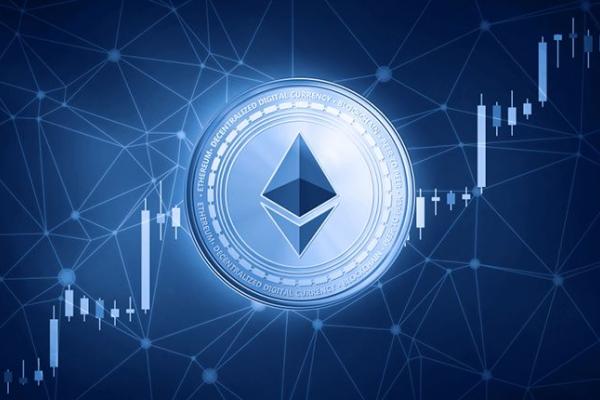What is Ethereum and how does it work? A beginners guide
With the second market cap across all cryptocurrencies, Ethereum has driven a lot of investors' attention.
This crypto is not only a status quo changer, but also enables quick development and deployment of new apps. Essentially, Ethereum enables creating dozens of new extremely innovative cryptocurrencies.
While Ethereum is obviously useful for developers and the tech world in general, many people with lesser knowledge of technology have problems in understanding it. We have designed this guide specifically for such people who may learn the basics of this game changer digital coin.
What Is Ethereum?
To fully understand what Ethereum is, what it does and how it may potentially impact our society, one should firstly learn its most important features and how they differ from the standard approach.
For starters, Ethereum is a decentralized system, which means it is not regulated by any government authority. The overwhelming majority of online services, businesses, and companies are based on the centralized government system. This approach has been applied for centuries, and despite history showing its disadvantages many times, it is still necessary when the parties do not trust each other.
Such centralized approach means full control of a single entity, but this single unity may fail, that's why the apps and servers based on this system are extremely vulnerable to hacker attacks and even power cuts. Besides, the majority of social networks and other online services require user personal information at least to some extent, which will then be stored at their servers. Such personal information may be easily stolen right from there by the same company, its untrustworthy employees, or hackers.
As a decentralized system, Ethereum is completely autonomous and is not regulated by anyone. As such, there is no central point to fail, as the platform is run with millions of volunteer computers throughout the world, so it cannot get disconnected. Besides, user personal information is stored on the user computers, while the content, such as apps, video, etc, maintains total control of their creators without any need to follow the rules of hosting providers, such as App Store or YouTube.
Secondly, it is important to understand that, while Bitcoin and Ethereum are always compared one against another, these two projects, as well as their goals, are absolutely different.
Ethereum vs. Bitcoin
Bitcoin was launched in 2009 as the first cryptocurrency ever, with a single goal to create a universal decentralized currency. This currency would not require any intermediary financial institution, but would still guarantee safe and valid transactions. This was possible thanks to a revolutionary technology called blockchain.
The blockchain is a digital ledger that registers and verifies records continuously. It is used to track and verify Bitcoin transactions. Since the global network of communication nodes maintains the chain of blocks, it is practically incorruptible. As new blocks are added to the network they are constantly validated.
Similar to Bitcoin, Ethereum is a distributed public blockchain network. While Ethereum and Bitcoin are both cryptocurrencies that can be mined or exchanged between users, there are many substantial differences between the two.
Bitcoin, for example, uses blockchain to track the ownership of the digital currency, which makes it an extremely effective point-to-point electronic cash system. Ethereum, on the other hand, focuses on executing the programming code of an application. Bitcoin has a maximum limit of 21 million Bitcoins that will ever be reached, while the potential supply of "Ether" can be virtually infinite. In addition, Bitcoin's average block mining time is 10 minutes, while Ethereum's goal is not to exceed 12 seconds, which means faster confirmations.
Ethereum took the technology behind Bitcoin and substantially expanded its capabilities. It is a complete network with its own Internet browser, coding language and payment system. The most important thing is that it allows users to create decentralized applications in Ethereum Blockchain.
These applications can be totally new ideas or decentralized revisions of existing concepts. This essentially eliminates the intermediary and all expenses associated with the participation of a third party. For example, the only gain that comes from the "likes" of users and "share" the publications of your favorite musician on Facebook is generated from an ad placed on your page and goes directly to Facebook. In an Ethereum version of the social network, both artists and the public would receive awards for their positive communication and support. Similarly, in a decentralized version of Kickstarter, you would not get just one device for your contribution to the company, you would receive a portion of the company's future earnings. Finally, applications based on Ethereum eliminate all types of payments to third parties for performing services of any kind.
In summary, Ethereum is a distributed, public, open source software platform based on Blockchain that allows developers to build and implement decentralized applications.
As mentioned above, Ethereum is a decentralized system, which means that it uses a peer-to-peer approach. Each individual interaction occurs between and is admitted only by the users that participate in it, without the intervention of any regulatory authority.

The entire Ethereum system is backed by a global system of nodes. The nodes are volunteers that download the Ethereum Blockchain to their computers and enforce all the consensus rules of the system, keeping the network fair and receiving rewards in return.
What Is a Smart Contract?
These consensus rules, as well as many other aspects of the network, are dictated by smart contracts. Smart contract is just a phrase used to describe a computer code designed to automatically perform transactions and other specific actions within a network with parts that are not necessarily trusted. The terms that both parties must comply with are pre-programmed in the contract. The completion of these terms triggers a transaction or any other specific action. Because smart contracts are executed in the blockchain, they are executed exactly as programmed without the possibility of censorship, downtime, fraud or third-party interference. Many people believe that smart contracts are the future and will eventually replace all other contractual agreements, since the implementation of smart contracts provides superior security to traditional contract law, reduces transaction costs associated with contracting and establishes trust between two parties.
Ethereum Virtual Machine (EVM)
The main innovation of Ethereum, the Ethereum Virtual Machine (EVM) is a complete Turing software that runs on the Ethereum network. The Ethereum virtual machine is designed to function as a runtime environment for smart contracts based on Ethereum. It makes the blockchain application creation process much easier and more efficient than ever. Instead of having to build a completely original blockchain for each new application, Ethereum allows the development of potentially thousands of different applications, all on one platform.
As the Ethereum virtual machine is completely isolated from the rest of the main network, it is a perfect test environment. Any company that seeks to create a smart contract can do so using the EVM, without affecting the main operations of the block chain. In addition, one could see the EVM as a "learning environment" to build larger, better and more robust smart contracts as well.
Is Ethereum a cryptocurrency?

By definition, Ethereum is a software platform that aims to act as an Internet and as a decentralized application store. A system like this needs a currency to pay for the computational resources needed to run an application or a program. This is where Ether comes into play.
Ether (ETH) is an active digital carrier and does not require a third party to process the payment. However, it not only works as a digital currency, it also acts as a kind of fuel for decentralized applications within the network. If a user wants to change something in one of the applications within Ethereum, he must pay a transaction fee so that the network can process the change.
Transaction fees are calculated automatically based on the amount of "fuel" that an action requires. The amount of fuel required is calculated based on the amount of computing power needed and the time it will take to run.
Who created Ethereum?
At the end of 2013, Vitalik Buterin described his idea in a white paper, which he sent to some of his friends, who in turn forwarded it further. As a result, about 30 people approached Vitalik to discuss the concept. He was expecting critical reviews and people pointing out critical errors in the concept, but it never happened.
The project was publicly announced in January 2014, with the core team consisting of Vitalik Buterin, Mihai Alisie, Anthony Di Iorio, Charles Hoskinson, Joe Lubin and Gavin Wood. Buterin also presented Ethereum at a Bitcoin conference in Miami, and only a few months later the team decided to organize a "crowdsale" of Ether (ETH), the native modena of the network, to finance the development.
How does Ethereum work?
As mentioned above, Ethereum is based on the Bitcoin protocol and its Blockchain design, but it is adjusted so that applications that are not money systems may be compatible with it. The only similarity of the two Blockchains is that they store complete transaction histories of their respective networks, but the Ethereum Blockchain does much more than that. In addition to the transaction history, each node in the Ethereum network also needs to download the most recent status or current information of each intelligent contract within the network, the balance of each user and the entire smart contract code and where it is stored.
Each Ethereum state consists of millions of transactions. These transactions are grouped to form 'blocks', with each block chained together with their previous blocks. But before the transaction can be added to the ledger, it needs to be validated, going through a process called mining.
Mining is a process in which a group of nodes applies its computing power to complete a 'proof of work' challenge, which is essentially a mathematical conundrum. The more powerful your computer is, the quicker you can solve the puzzle. An answer to this conundrum is in itself a proof of work, and guarantees the validity of a blockade.
Many miners from all over the world compete with each other in an attempt to create and validate a block, since each time a miner tries a block, new tokens from Ether (ETH) are generated and given to that miner. The miners are a backbone of the Ethereum network, as they not only confirm and validate transactions and any other operation within the network, but also generate new tokens of the network's currency.
What Can Ethereum Be Used for?
First, Ethereum allows developers to build and deploy decentralized applications. In addition, any centralized service can be decentralized using the Ethereum platform. The potential of the Ethereum platform to create applications is not limited by anything other than the creativity of the creators.
Decentralized applications have the potential to change the relationship between companies and their audiences completely. At present, there are many services that charge commissions for the mere fact of providing a custody service and a platform for users to exchange goods and services. On the other hand, the Ethereum Blockchain can allow customers to trace the origins of the product they are buying, while the implementation of intelligent contracts can guarantee a safe and fast exchange for both parties without any intermediary.
Basically, the Blockchain of Ethereum is able to bring its basic principles (trust, transparency, security and efficiency) to any service, business or industry.
Ethereum can also be used to create Decentralized Autonomous Organizations (DAO’s), which operate in a completely transparent manner and independently of any intervention, without a leader as such. The DAO’s are executed by programming code and a collection of intelligent contracts written in Blockchain. It is designed to eliminate the need for a person or a group of people to fully and centrally control an organization.
DAO’s are owned by people who bought tokens. However, the amount of purchased tokens does not equate to shares and ownership. Tokens, on the other hand, are contributions that provide people with voting rights.
Advantages of Ethereum

The Ethereum platform benefits from all the properties of the Blockchain technology which it is run with. It is completely immune to third-party interventions, which means that all decentralized applications and DAOs deployed within the network cannot be controlled by anyone at all.
Any Blockchain network is formed around a consensus principle, which means that all nodes within the system must agree on every change that takes place within it. This eliminates the possibilities of fraud, corruption and makes the network inviolable.
The whole platform is decentralized, which means that there is not a single possible point of failure. Therefore, all applications will always remain online and will never be turned off. In addition, the decentralized nature and cryptographic security make the Ethereum network well protected against possible hacking attacks and fraudulent activities.
Disadvantages of Ethereum
Although smart contracts are designed to make the network fail-proof, they can only be as good as the people who write their code. There is always room for human error, and any error in the code could be exploited. If that happens, there is no direct way to stop an attack by hackers or exploitation of that error. The only possible way to do this would be to reach a consensus and rewrite an underlying code. However, this goes completely against the very essence of Blockchain, since it is supposed to be an immutable ledger.
The DAO, as it is known to a particular DAO released on April 30, 2016, was attacked and more than 3.6M Ether tokens were stolen. The attacker exploited the recursive call error in the code, simply draining the DAO funds into a child DAO, which had the same structure. The loss of a large part of the DAO funds was not the only consequence of the attack, since it basically undermined the trust of the users throughout the Ethereum network, with the price of ETH falling from more than $20 to less than $13.
How to get Ether (ETH)
There are two main ways to get Ether: either to buy it or to mine it.
The most common and perhaps the most convenient way to buy Ether is by buying it on an exchange. All you need to do is find an exchange that sells Ether and operates within your jurisdiction, set up an account and use either your bank account, bank transfer or, in some cases, even your credit card to buy Ether tokens. Those should be stored in a wallet, which can be provided by the exchange itself, the native Mist browser of Ethereum, or by other specialized services.
As we mentioned before, buying a cryptocurrency on an exchange can lead to some complications, such as account verification process, commissions, etc. Also, in order to earn by buying and selling Ether directly, you will have to buy it for the total cost, which will not allow you to earn a decent income if you currently have limited funds. In addition, there are cases of massive wallet hacking, in which case you risk to lose all your investments without the possibility of getting them back (do not forget that the system is decentralized, and no bank will save it).
Another way to obtain Ether tokens (ETH) is by mining them. Ethereum mining involves proof-of-work, which means that the miners contribute their computing power to solving complex mathematical problems in order to seal and confirm a block of actions within the network. Miners who successfully complete this task receive a reward for each block they mined.

To date, Ethereum mining has become much more complicated and requires expensive equipment to generate a perceptible income, while the prices of video cards are still high.
In other words, the physical possession of Ether, as well as other cryptos, carries certain complexities and risks, and we do not recommend that you buy any cryptocurrency if you are not sure exactly why you are doing that.
If you only want to earn money on Ether (ETH) exchange rate, Libertex offers you a simple and convenient way to do it with CFD’s. CFD’s are contracts for price difference. Now, to earn money with the exchange rate fluctuations, you do not necessarily have to buy it for the total cost. It is enough to pay the amount of the differential (the difference between the ask and bid prices), and the rest of the revenue gained from Ether rate rise or fall will be yours.
We hope you found this article helpful. Please don't hesitate to share our questions or ideas in the comment section.
In addition, we invite you to open a free demo account at Libertex and start trading Ether now!
We also offer you free lessons on how to trade CFD’s. Have a nice day!
Why to trade with Libertex?
- access to a demo account free of charge
- technical assistance to the operator 5 days a week, 24 hours a day
- leverage up to 1:500
- operate on a platform for any device: Libertex and Metatrader 4 and 5
- no commissions for extractions in Latin America




